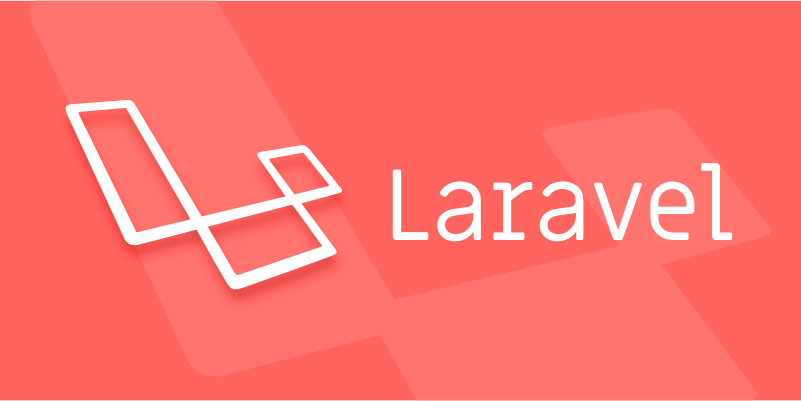Managing File Uploads and Storage in a Laravel Application
Jul 12, 2025 am 03:03 AMProcessing file upload and storage in Laravel requires form configuration, verification, driver selection, security policies and database records. 1. Make sure that the form uses enctype="multipart/form-data", adjusts server upload restrictions and sets verification rules; 2. Select a storage driver according to project requirements, such as the local disk is suitable for small and medium-sized projects, and S3 is suitable for production environments; 3. Use a unique naming strategy to improve security and avoid path crossing and script execution risks; 4. After uploading, save the relative path to the database, and use Storage::url() to generate signature links to ensure that path information is recorded one by one when multiple files are uploaded.

Handling file uploads and storage is an integral part of most web applications, and in Laravel, this process is both flexible and powerful. If you are developing a system that requires users to upload images, documents, or other types of files, it is particularly important to understand how to efficiently and securely manage these operations and subsequent storage methods.

The following is a few practical perspectives to share some experience and suggestions on handling file uploads and storage in Laravel.

Preparation before uploading files
There are several basic configurations and precautions that must be completed before starting to process uploads:
- Confirm that the form uses
enctype="multipart/form-data": This is a prerequisite for uploading files in HTML forms, otherwise the file data will not be submitted correctly. - Check the server's upload limit : PHP's default
upload_max_filesizeandpost_max_sizeare usually smaller. If you allow large files to be uploaded, remember to adjust them inphp.ini. - Set reasonable verification rules : Use Laravel's request verification function (such as
request()->validate()) in the controller to ensure that the upload is in the expected format and control the size limit.
For example:

request()->validate([
'avatar' => 'required|image|mimes:jpeg,png,jpg,gif|max:2048',
]);This prevents non-image files or excessively large files from being uploaded, reducing potential risks.
How to choose the right storage driver
Laravel provides a variety of storage methods, which can be easily switched through the filesystems.php configuration file. Common options include local disk, Amazon S3, FTP, and more.
- Local storage (using
publicorstoragedirectories by default) is suitable for small and medium-sized projects and is simple and easy to use. - Cloud storage (such as S3) is more suitable for production environments and is especially useful when multi-server deployments or CDN acceleration is required.
- If you want the uploaded file to be accessible externally, remember to run
php artisan storage:linkto create a soft link, so that it can be accessed through a URL like/storage/xxx.jpg.
You can choose the most suitable driver based on project size and needs. For example, e-commerce websites may prefer to use S3 to manage product images in a unified manner, while internal management systems can directly use local storage.
Security and file naming policies
The most easiest thing to ignore when uploading files is security issues. Here are some practical suggestions:
Don't trust the file names provided by the user : an attacker may construct a malicious file name or even try a path through the attack. Rename files with unique identifiers, such as
hashor timestamps.Sample code:
$path = request()->file('document')->storeAs( 'uploads', uniqid() . '.' . $file->getClientOriginalExtension(), 'public' );Avoid saving files to the web root directory : this can easily lead to script execution risks. It is recommended to place it under
storage/app/publicand access it through symbolic links.Restrict the permissions for uploading directories : Ensure that the uploading directory cannot execute PHP scripts, and prevent them from being executed after uploading
.phpfiles.
In addition, for sensitive files (such as user private documents), it is considered not to use public disks, but to control access rights through controller logic.
Process the uploaded file path and database records
After the upload is successful, you need to save the file path to the database for subsequent calls. A few points to note here:
- Storage paths are recommended to use relative paths instead of full URLs, which makes it easier to adjust when migrating storage locations.
- If using cloud storage, Laravel's
Storage::url($path)method can automatically generate signed access links, which is helpful for temporary access. - For multiple files uploads, each record can be processed in a loop and saved separately.
For example, suppose you want to save multiple images for an article:
foreach ($request->file('images') as $image) {
$path = $image->store('article_images', 'public');
ArticleImage::create(['article_id' => $articleId, 'path' => $path]);
}In this way, each file has an independent record, which is also convenient for post-query and deletion.
Basically that's it. Laravel provides a complete file processing mechanism, which makes rational use of its built-in functions and combined with some security and performance optimizations to deal with various upload scenarios well.
The above is the detailed content of Managing File Uploads and Storage in a Laravel Application. For more information, please follow other related articles on the PHP Chinese website!

Hot AI Tools

Undress AI Tool
Undress images for free

Undresser.AI Undress
AI-powered app for creating realistic nude photos

AI Clothes Remover
Online AI tool for removing clothes from photos.

Clothoff.io
AI clothes remover

Video Face Swap
Swap faces in any video effortlessly with our completely free AI face swap tool!

Hot Article

Hot Tools

Notepad++7.3.1
Easy-to-use and free code editor

SublimeText3 Chinese version
Chinese version, very easy to use

Zend Studio 13.0.1
Powerful PHP integrated development environment

Dreamweaver CS6
Visual web development tools

SublimeText3 Mac version
God-level code editing software (SublimeText3)

Hot Topics
 What are policies in Laravel, and how are they used?
Jun 21, 2025 am 12:21 AM
What are policies in Laravel, and how are they used?
Jun 21, 2025 am 12:21 AM
InLaravel,policiesorganizeauthorizationlogicformodelactions.1.Policiesareclasseswithmethodslikeview,create,update,anddeletethatreturntrueorfalsebasedonuserpermissions.2.Toregisterapolicy,mapthemodeltoitspolicyinthe$policiesarrayofAuthServiceProvider.
 How do I create new records in the database using Eloquent?
Jun 14, 2025 am 12:34 AM
How do I create new records in the database using Eloquent?
Jun 14, 2025 am 12:34 AM
To create new records in the database using Eloquent, there are four main methods: 1. Use the create method to quickly create records by passing in the attribute array, such as User::create(['name'=>'JohnDoe','email'=>'john@example.com']); 2. Use the save method to manually instantiate the model and assign values ??to save one by one, which is suitable for scenarios where conditional assignment or extra logic is required; 3. Use firstOrCreate to find or create records based on search conditions to avoid duplicate data; 4. Use updateOrCreate to find records and update, if not, create them, which is suitable for processing imported data, etc., which may be repetitive.
 What is the purpose of the artisan command-line tool in Laravel?
Jun 13, 2025 am 11:17 AM
What is the purpose of the artisan command-line tool in Laravel?
Jun 13, 2025 am 11:17 AM
Artisan is a command line tool of Laravel to improve development efficiency. Its core functions include: 1. Generate code structures, such as controllers, models, etc., and automatically create files through make: controller and other commands; 2. Manage database migration and fill, use migrate to run migration, and db:seed to fill data; 3. Support custom commands, such as make:command creation command class to implement business logic encapsulation; 4. Provide debugging and environment management functions, such as key:generate to generate keys, and serve to start the development server. Proficiency in using Artisan can significantly improve Laravel development efficiency.
 How do I install Laravel on my operating system (Windows, macOS, Linux)?
Jun 19, 2025 am 12:31 AM
How do I install Laravel on my operating system (Windows, macOS, Linux)?
Jun 19, 2025 am 12:31 AM
Yes,youcaninstallLaravelonanyoperatingsystembyfollowingthesesteps:1.InstallPHPandrequiredextensionslikembstring,openssl,andxmlusingtoolslikeXAMPPonWindows,HomebrewonmacOS,oraptonLinux;2.InstallComposer,usinganinstalleronWindowsorterminalcommandsonmac
 How do I define methods (actions) in a controller?
Jun 14, 2025 am 12:38 AM
How do I define methods (actions) in a controller?
Jun 14, 2025 am 12:38 AM
Defining a method (also known as an action) in a controller is to tell the application what to do when someone visits a specific URL. These methods usually process requests, process data, and return responses such as HTML pages or JSON. Understanding the basic structure: Most web frameworks (such as RubyonRails, Laravel, or SpringMVC) use controllers to group related operations. Methods within each controller usually correspond to a route, i.e. the URL path that someone can access. For example, there may be the following methods in PostsController: 1.index() – display post list; 2.show() – display individual posts; 3.create() – handle creating new posts; 4.u
 How do I run tests in Laravel? (php artisan test)
Jun 13, 2025 am 12:02 AM
How do I run tests in Laravel? (php artisan test)
Jun 13, 2025 am 12:02 AM
ToruntestsinLaraveleffectively,usethephpartisantestcommandwhichsimplifiesPHPUnitusage.1.Setupa.env.testingfileandconfigurephpunit.xmltouseatestdatabaselikeSQLite.2.Generatetestfilesusingphpartisanmake:test,using--unitforunittests.3.Writetestswithmeth
 What are controllers in Laravel, and what is their purpose?
Jun 20, 2025 am 12:31 AM
What are controllers in Laravel, and what is their purpose?
Jun 20, 2025 am 12:31 AM
The main role of the controller in Laravel is to process HTTP requests and return responses to keep the code neat and maintainable. By concentrating the relevant request logic into a class, the controller makes the routing file simpler, such as putting user profile display, editing and deletion operations in different methods of UserController. The creation of a controller can be implemented through the Artisan command phpartisanmake:controllerUserController, while the resource controller is generated using the --resource option, covering methods for standard CRUD operations. Then you need to bind the controller in the route, such as Route::get('/user/{id
 How do I customize the authentication views and logic in Laravel?
Jun 22, 2025 am 01:01 AM
How do I customize the authentication views and logic in Laravel?
Jun 22, 2025 am 01:01 AM
Laravel allows custom authentication views and logic by overriding the default stub and controller. 1. To customize the authentication view, use the command phpartisanvendor:publish-tag=laravel-auth to copy the default Blade template to the resources/views/auth directory and modify it, such as adding the "Terms of Service" check box. 2. To modify the authentication logic, you need to adjust the methods in RegisterController, LoginController and ResetPasswordController, such as updating the validator() method to verify the added field, or rewriting r






